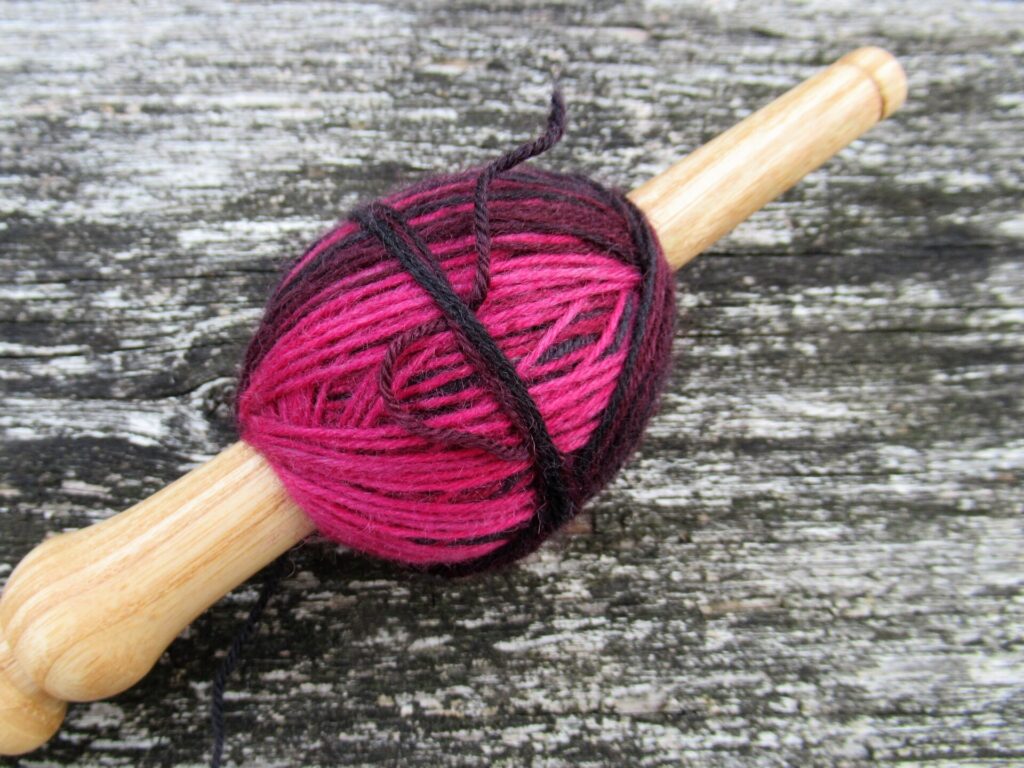
Hello!
I have no idea how many people own and use a nøstepinne. Maybe you have owned and used one for years and what I’m writing today is nothing new. It’s for those of you who do not have one and maybe have never even heard of it that I’m writing about the What, Why and How of using and choosing a nøstepinne.
What is a nøstepinne?
Nøstepinne is a Scandinavian word that can also be spelled as nöstepinne, nystepinne or nøstepinde, depending on whether you are in Norway, Sweden or Denmark. It is often translated as ‘nest stick’, but that is just silly. As far as I know, nöste or nøste means ball of yarn. And my Swedish-English dictionary tells me that ‘nysta’ means ‘to wind’, or ‘make up into balls or a ball’. Pinne means pin or stick. So nystepinne (or however it’s spelled) simply means ‘ball winding stick’. And that is what it is, a stick for winding yarn balls on.
I am the proud owner of two nøstepinner:
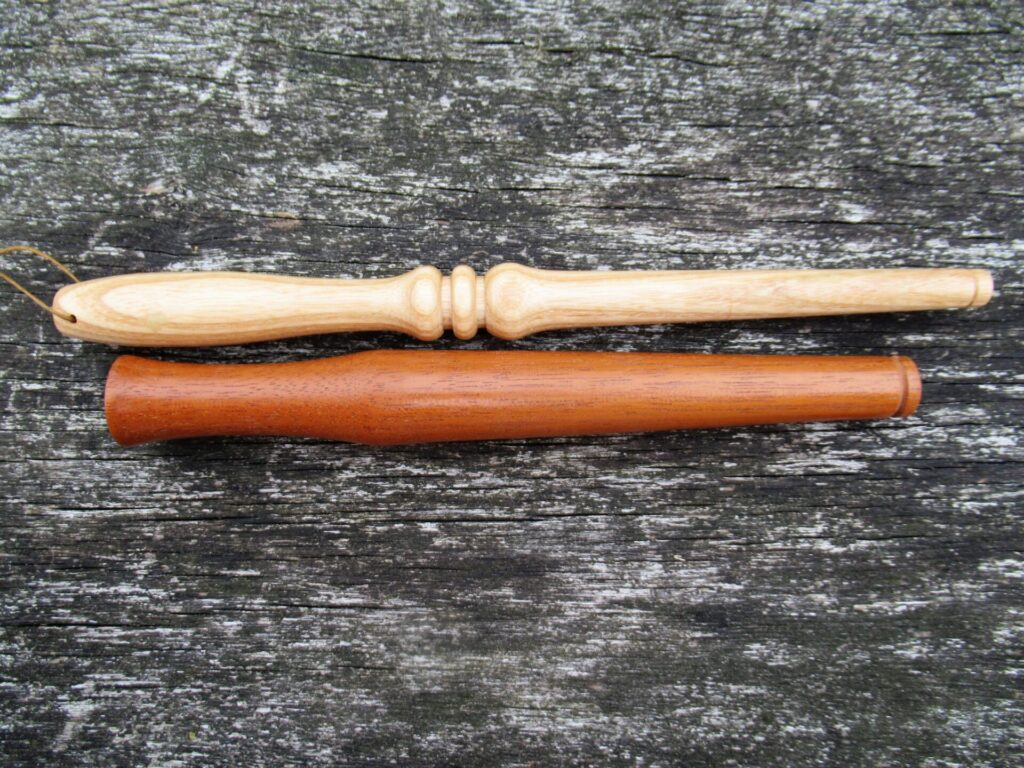
The darker coloured one is a souvenir from Shetland that I’ve had for almost a decade. I think it was hand-made by a Shetland woodworker, but it didn’t come with any information about the name of the maker or the type of wood used. The lighter coloured one is from ChiaoGoo and is a recent acquisition.
KnitPro also has nøstepinner and there are many lovely handmade ones to be found on Etsy.
Why use a nøstepinne?
Before answering that question, here is a picture of 3 balls of yarn wound in different ways viewed from above:
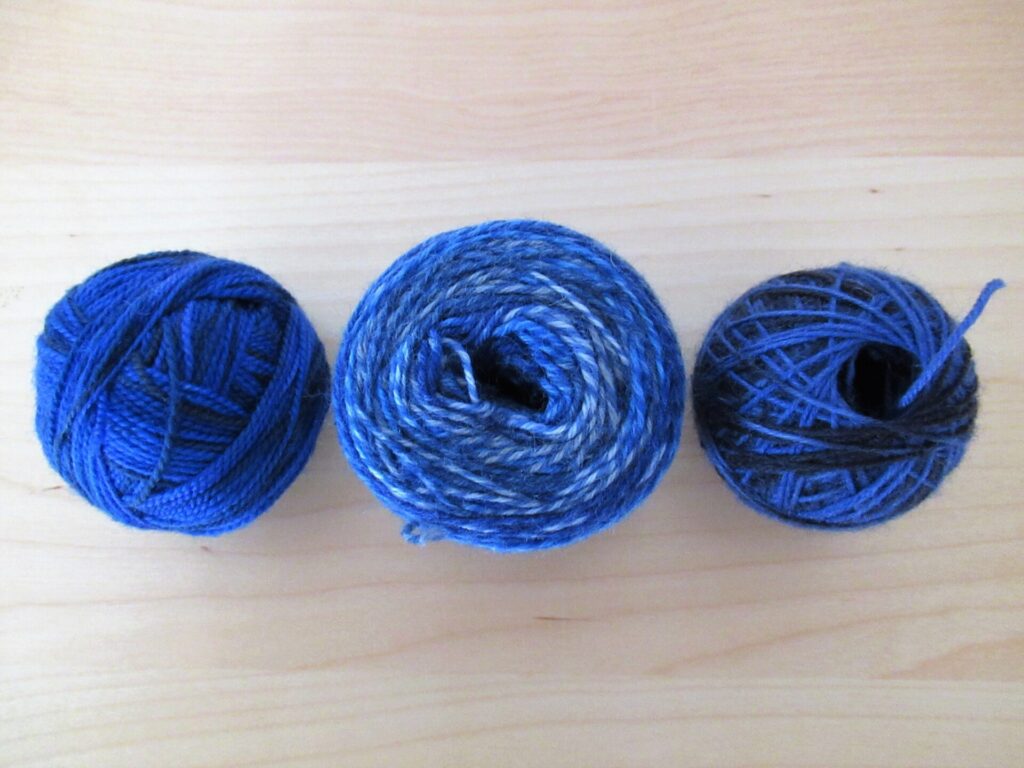
From left to right: an ordinary hand-wound ball, a yarn ‘cake’ wound on a cranked ball winder, and a ball wound on a nøstepinne. Each method has it’s pros and cons. So why use a nøstepinne?
- It makes centre-pull balls. This can be useful for various reasons; to name a few:
- The ball doesn’t roll away if you use the thread from the inside.
- It is possible to knit with two threads held together, one from the inside and one from the outside of the ball
- In spinning, a 2-ply yarn can be made by plying the thread from the inside with the thread from the outside.
A cranked yarn winder also makes centre-pull balls, winding yarn by hand without a nøstepinne does not.
- It is slow. Much, much slower that using a cranked yarn winder and also slower than winding a ball in the ordinary way. Is that an advantage? If you ask me, absolutely! Winding yarn into a ball with a nøstepinne is a meditative, peaceful thing to do. It is good for the soul.
- It is easy to take along and can be used anywhere.
- It makes wonderfully aesthetically pleasing balls of yarn. Again, good for the soul. Just look at the before and after pictures of some sock yarn remnants below and I think you know what I mean.
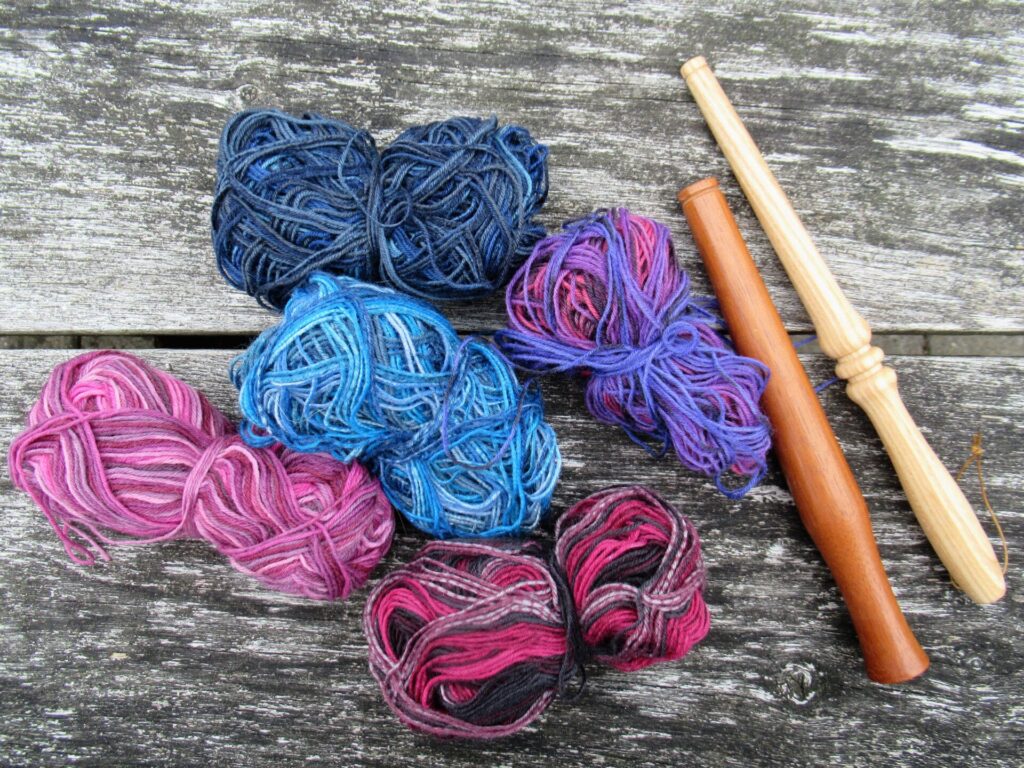
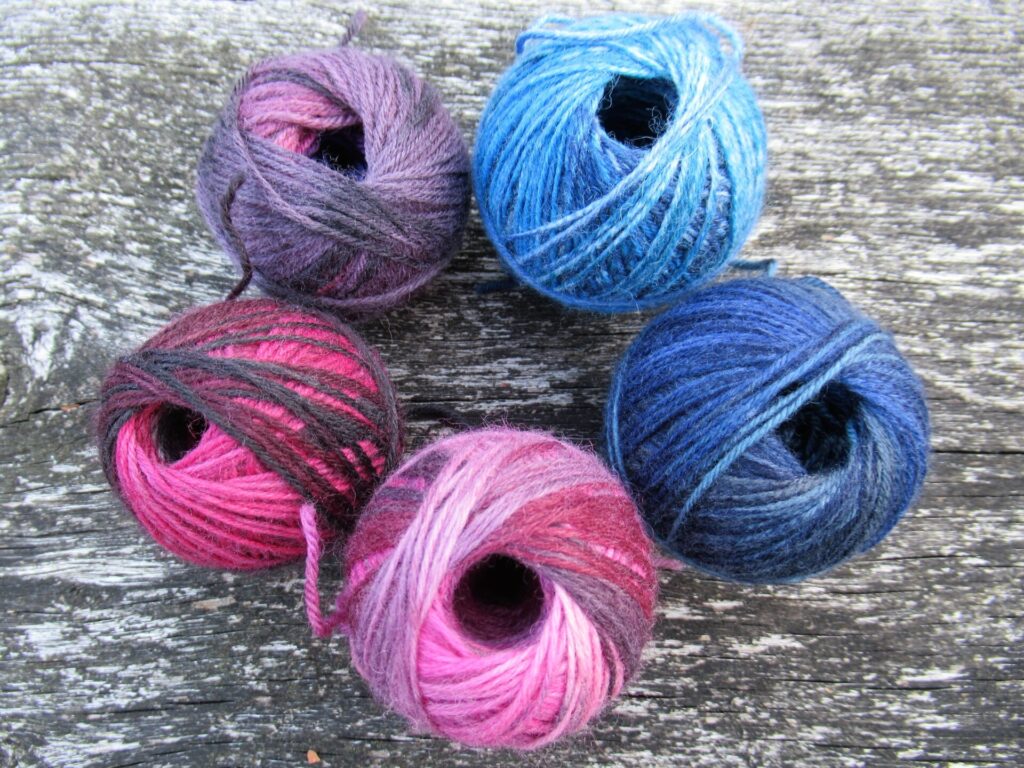
How to use a nøstepinne
First wrap the yarn several times around the thin notch at the top of the nøstepinne. (If it doesn’t have a notch, make a loop at the top, or hold the yarn in place with your thumb near the other end of the nøstepinne.)
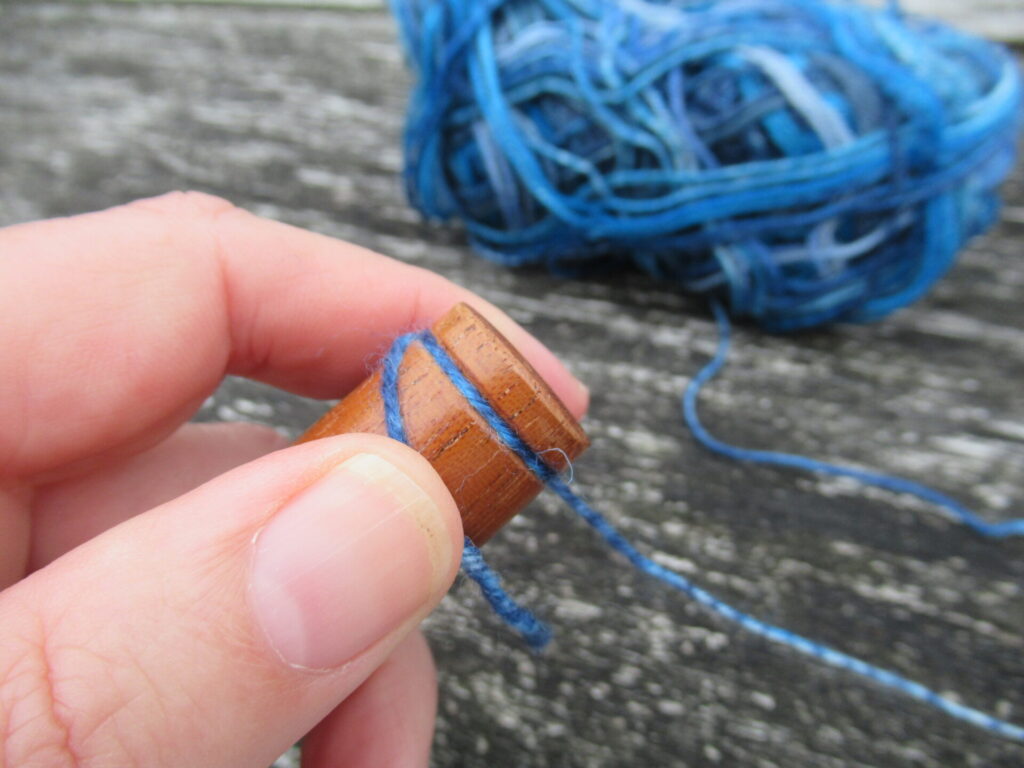
Then wrap the yarn around the shaft of the nøstepinne as shown below. Wrap 4 or 5 layers of yarn around a width of about 2.5 cm (1 inch).
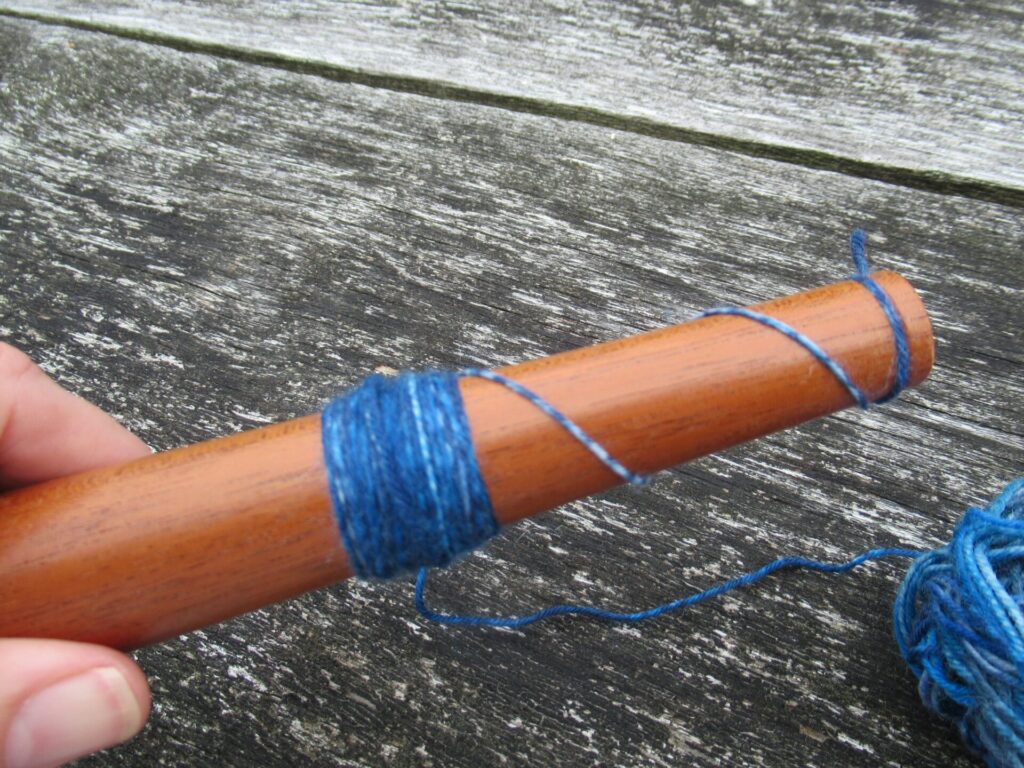
Now start winding the yarn around this beginning diagonally, from bottom right to top left. Keep winding in the same direction all the time, while slowly turning the nøstepinne towards you.
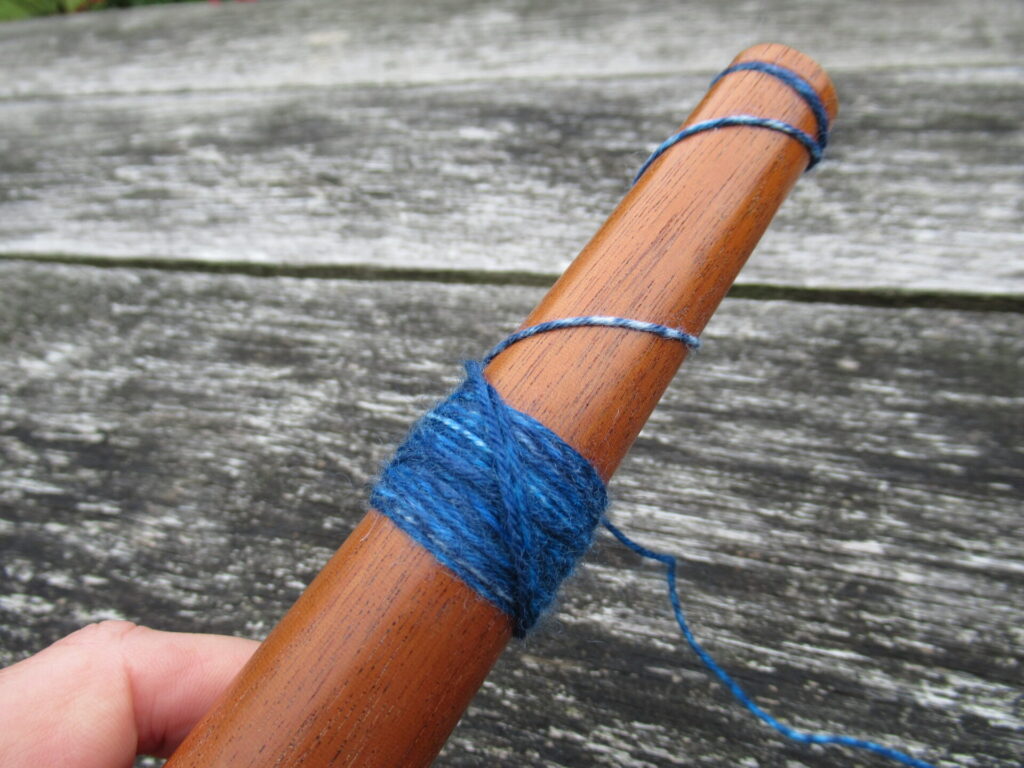
A brief video by Ann Kingstone showing the process very clearly can be viewed here. Her method is slightly different from mine. That’s fine – everybody develops their own technique over time.
Watch your little ball grow…
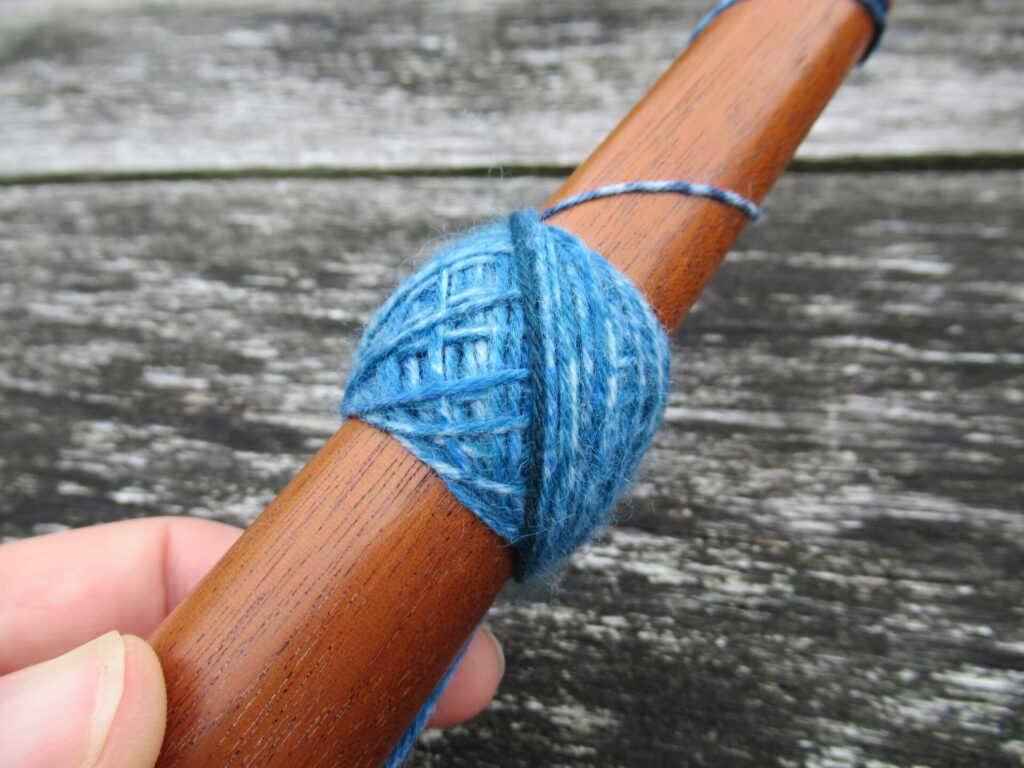
… and grow.
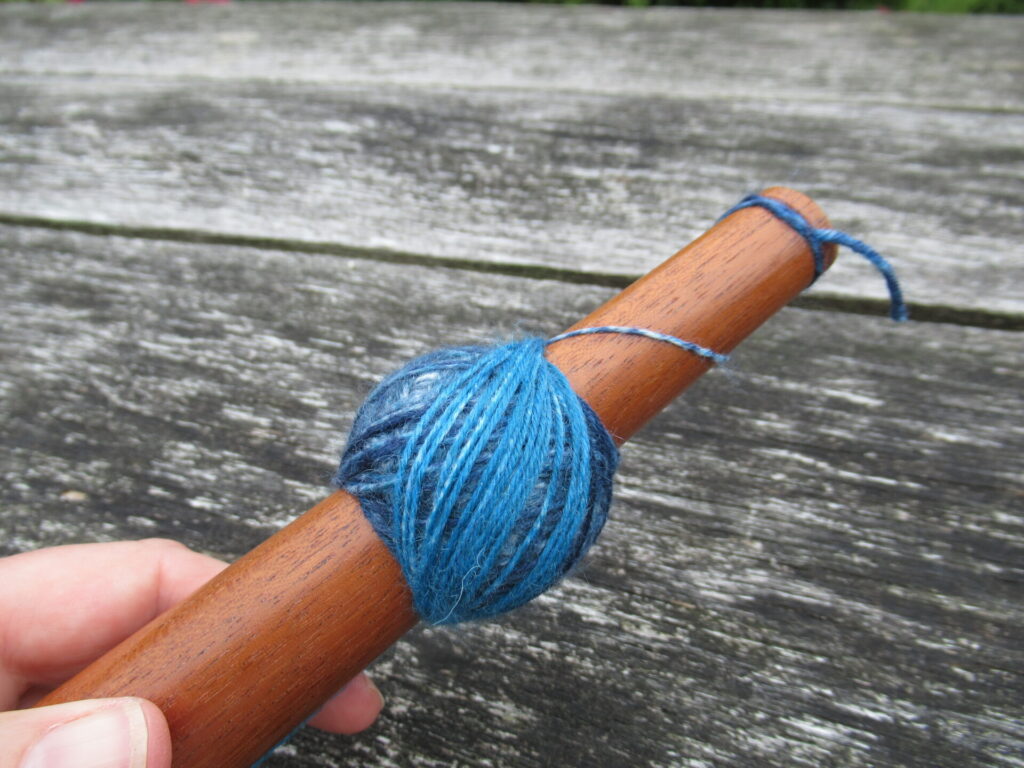
Especially with self-striping yarn it is very satisfying to see layer upon layer of yarn build up on your nøstepinne.
Finally, when you’re almost at the end of your yarn, wrap the yarn around horizontally several times, tuck the end in under the horizontal strands, and remove the ball from the nøstepinne.
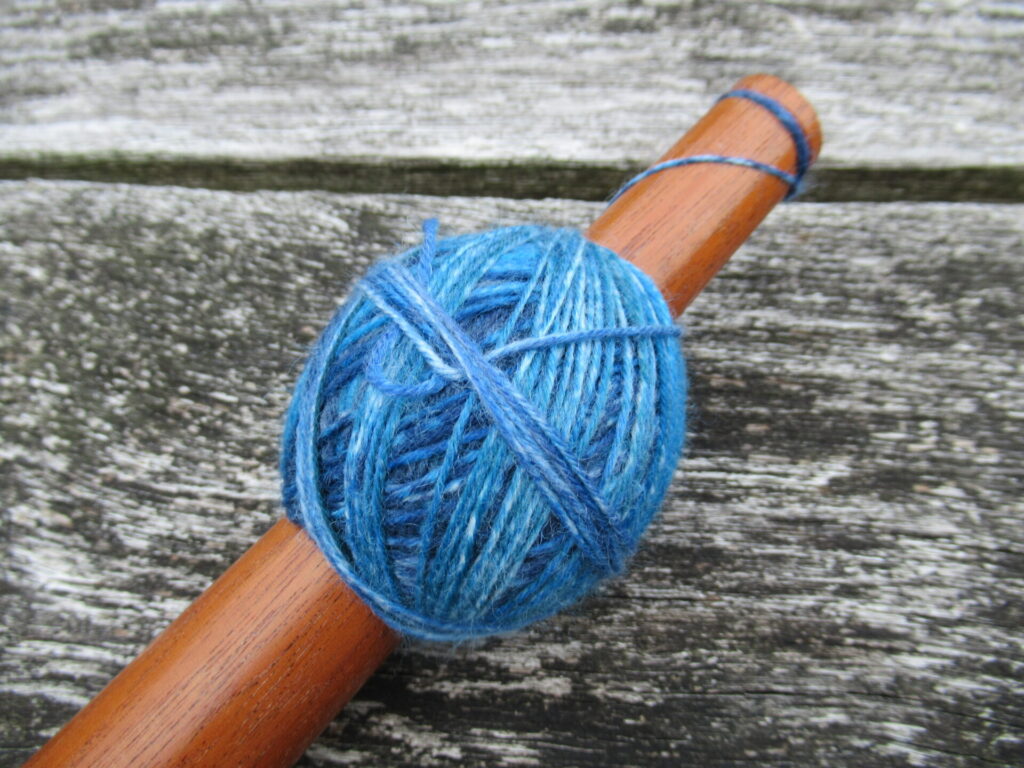
Nice, no?
How to choose a nøstepinne
You don’t really need a ‘real’ nøstepinne to begin with. To try out whether you like making yarn balls in this way, other things that can be found in any home can be used, like the inner tube from a roll of cling film or aluminium foil, or a thick marker:
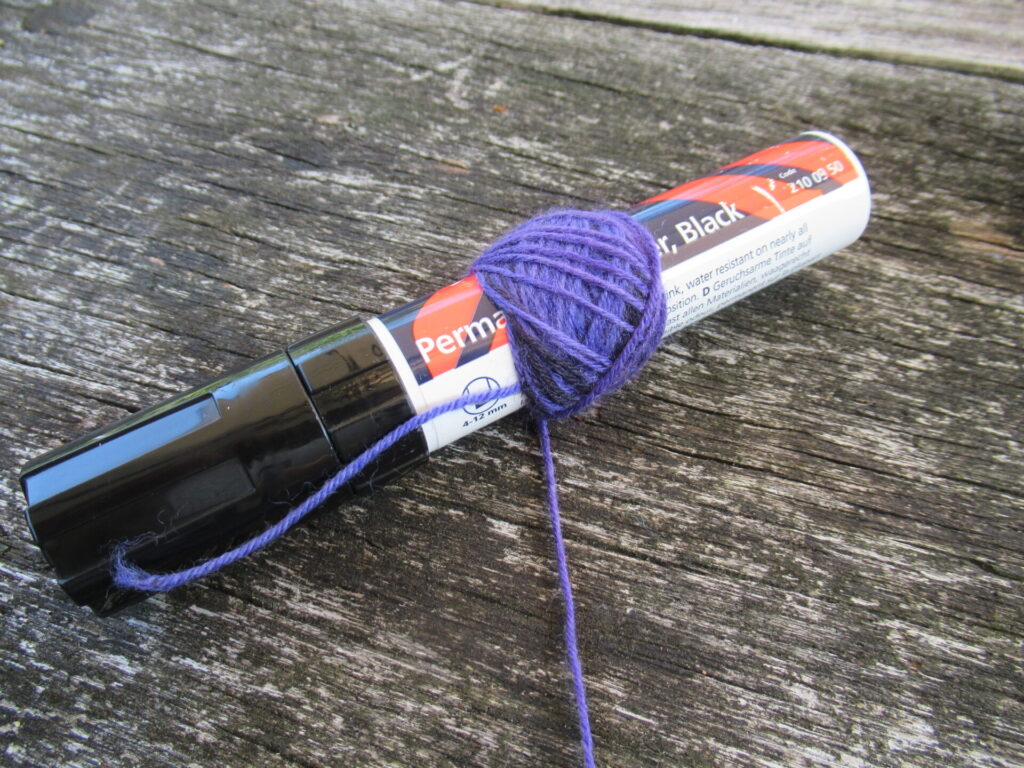
A real wooden nøstepinne is much nicer to the touch, of course. So if you like winding balls in this way and decide to go looking for a wooden one, here are some things to consider:
- The smoothness of the wood
- The colour – do you prefer lighter or darker wood?
- The style – simple or more elaborately turned
- The size – in my experience a thicker nøstepinne is easier for a beginner; when starting a ball, it is harder to make the yarn catch behind the horizontal beginning on a thin nøstepinne
- The ball shape – the thicker the nøstepinne, the rounder the ball, and the thinner the nøstepinne the more egg-shaped the ball tends to become:
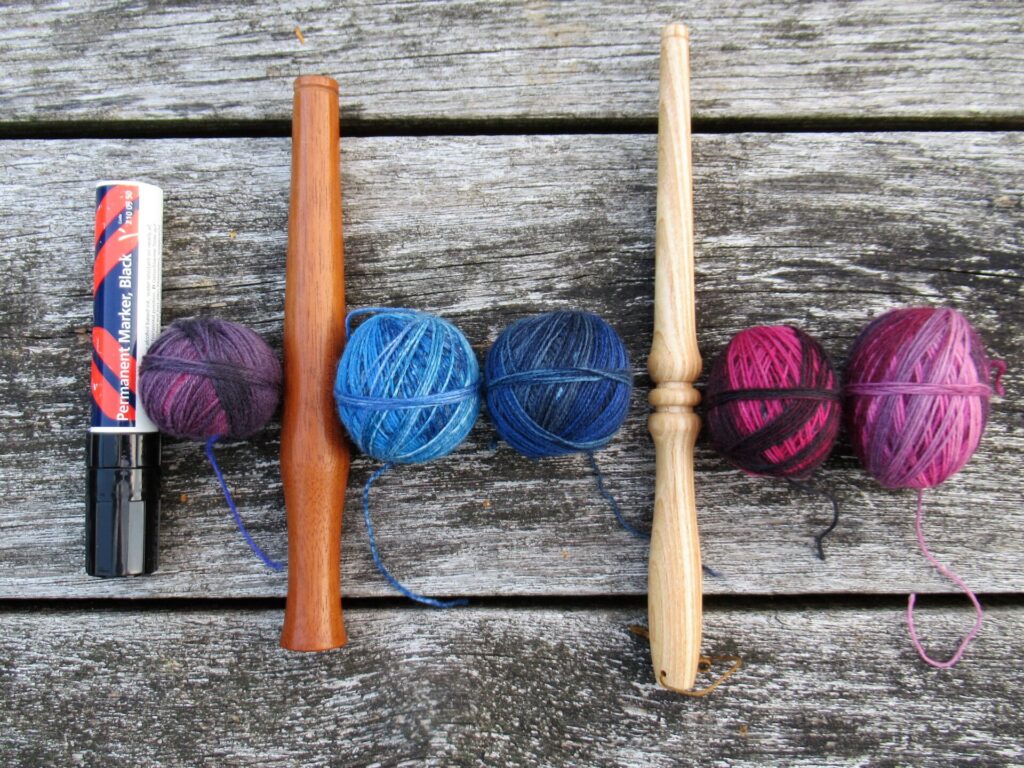
Well, that’s all I can tell you about nøstepinner. If you’d like to try making yarn balls in this way, too, please take your time. It is really simple, but it takes a little practice for it to become a natural, flowing movement. I hope you’ll enjoy making these neat balls of yarn as much as I do.
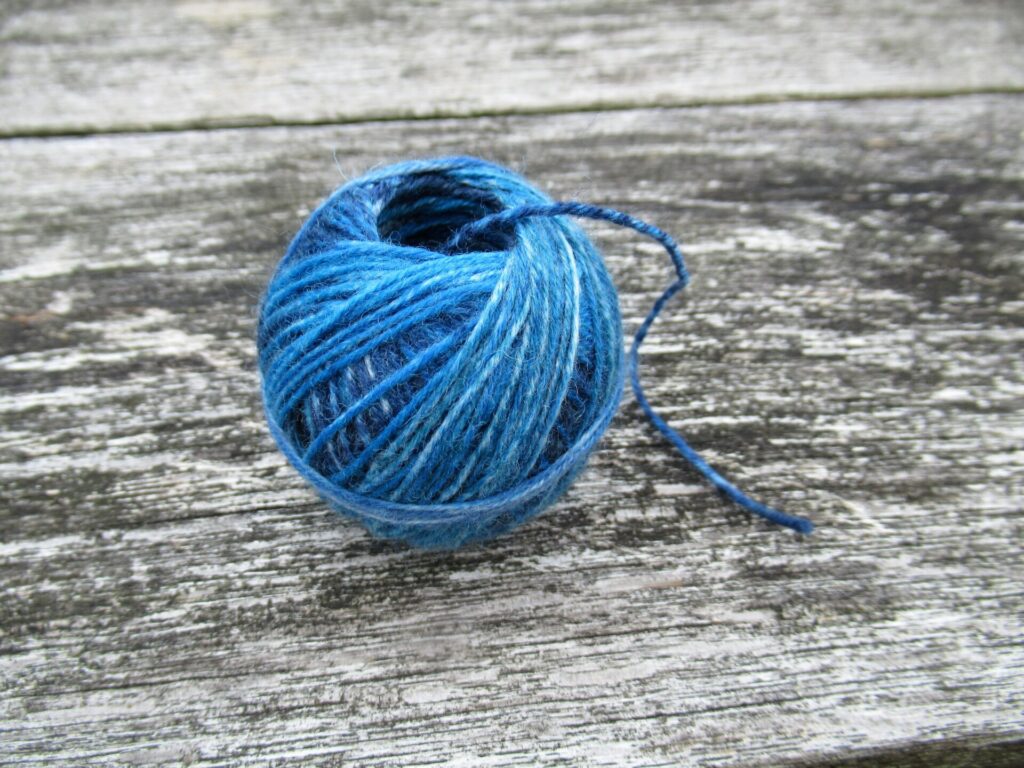
Fijne blog!
En een herinnering aan de Stitch ” Bitch avond met jouw Nøstepinne.
Thnxxxx
Ah, ja, nu je het zegt. Dat was erg gezellig.
Fijne herinnering aan dezelfde Stitch ‘n Bitch-avond! Niet lang na jouw uitleg die avond heb ik er ook eentje gekocht. Ik herinner me hoe je toen voordeed hoe je ook het kokertje van een rol keukenpapier kunt gebruiken
Wat bijzonder dat jullie je dat nog zo herinneren! Ik herinner me de avond ook als erg gezellig, maar had niet verwacht dat het anderen ook zo lang zou bijblijven.
I learned something new! Sounds like a good tool to have.
Thank you!
It’s simple, but really nice to play with.
Leuk de oorsprong van het woord, ik heb nog even gekeken wat in het Noorse woordenboek staat.
De uitleg voor nøste:
Bunt, særlig i kuleform, av oppvundet garn, tråd eller lignende
Wat ongeveer neerkomt op:
Bundel, doorgaans in bolvorm, van opgerold garen, draad of iets dergelijks.
Maar het is ook een werkwoord in het Noors:
å nøste = vinde opp i nøste
Oftewel opwinden tot een bol
Leuk om ook het Noors te weten.
So funny – this is exactly the way I wind a hank of yarn into a ball, except that I use the cardboard tube that forms the core of a roll of toilet paper or paper towels. Cheap and easily available, though not as pretty as a nystepinne. Apparently I “unvented” the nystepinne before ever seeing one!
That is really funny. Was the method passed on to you by your mum, grandmother or an aunt? If not, and you ‘unvented’ it yourself, you’re a genius!
Yes, I did “unvent” it myself. Thanks for such a kind comment!
My goodness. I have knitted for almost 40 years and never thought of acquiring a nystpinne as I would call it in Swedish. By the way, nystan or garnnystan is the Swedish word for a ball of yarn, I haven’t thought about that before that we have one word for it.
Off to scour the internet for a nystpinne!
Well, it isn’t exactly a tool a knitter can’t live without, but it is fun. I hope you can find a nice one and it won’t take too long to arrive. Good luck!
Thank you for this lovely clear tutorial. I was gifted a really old pin for Christmas, all wrapped in jute – I knew it had to have some other use so kept looking. This morning I removed the elaborations from it and wound my first ball of yarn. The first of many without a doubt.
I am hooked and my yarn cupboard is going to look so much better a month from now.
How lovely to have an antique nostepinne. I’m glad to have been of some help with its use. Enjoy the slow process of making your beautiful balls of yarn!